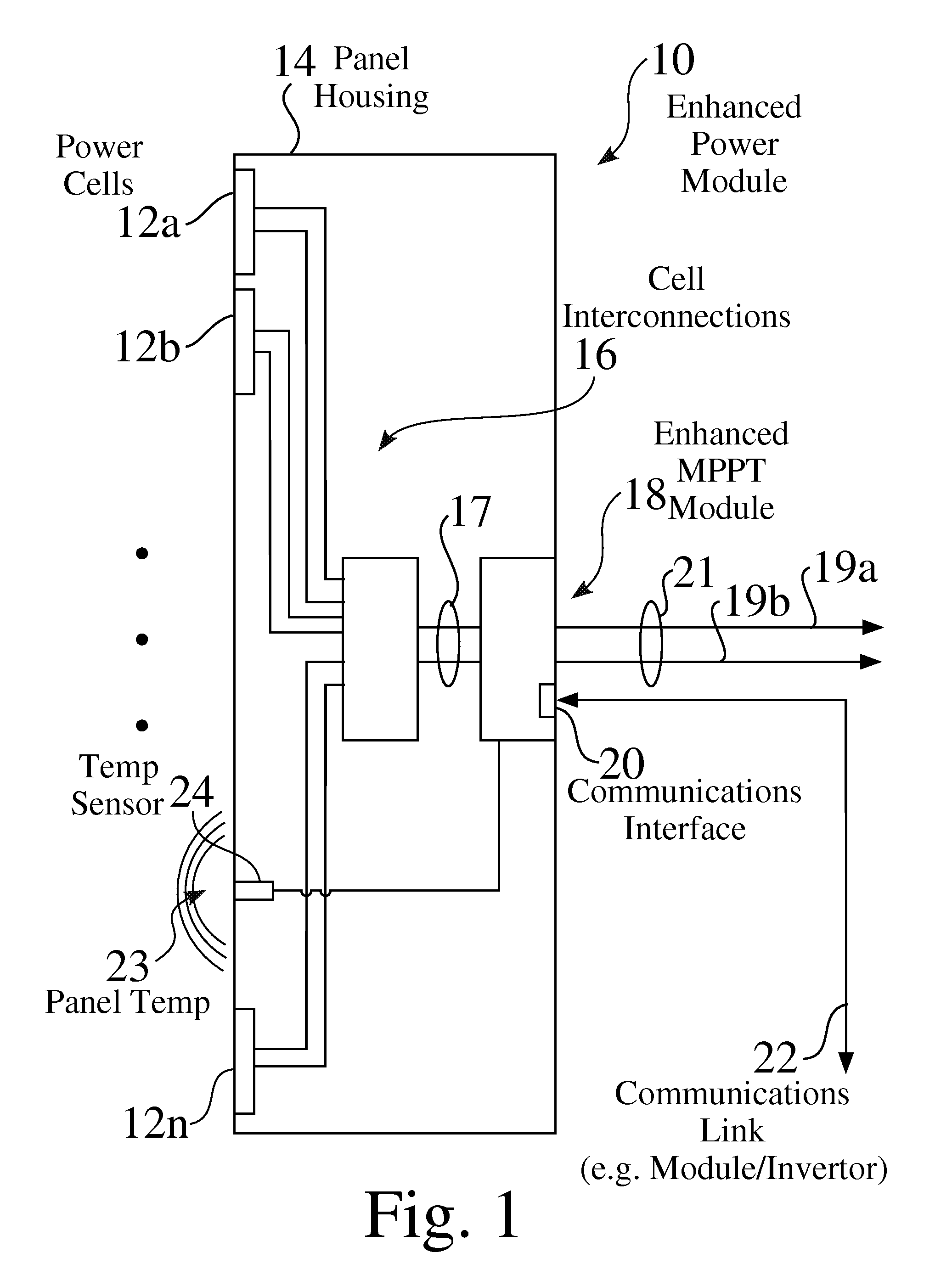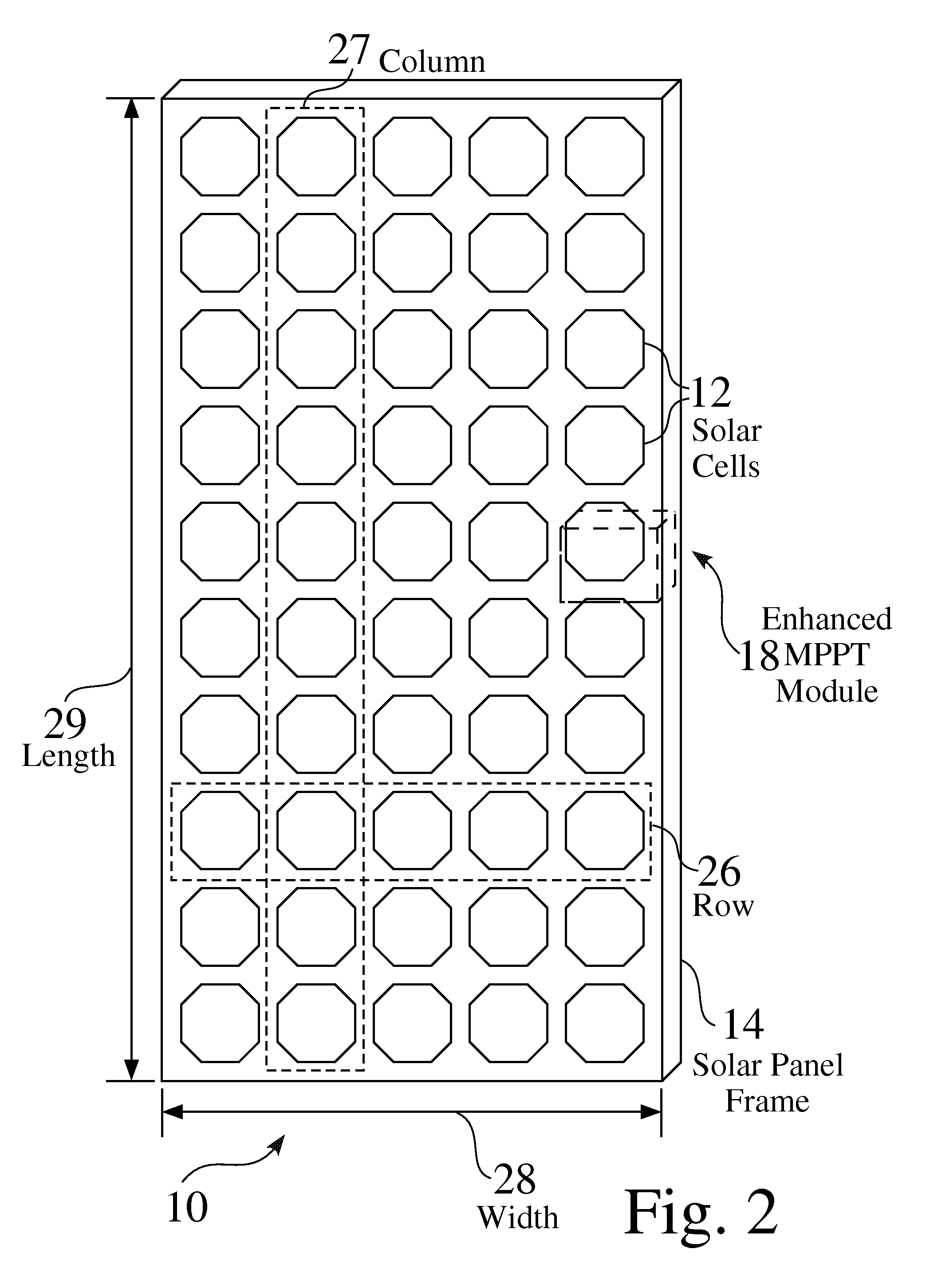Pole-mounted power generation systems, structures and processes
a power generation system and pole-mounted technology, applied in the direction of dc-ac conversion without reversal, emergency power supply arrangement, transportation and packaging, etc., can solve the problems of large localized power dissipation, string of cells bringing many complications, and low voltages that do not interface well with existing higher power systems
- Summary
- Abstract
- Description
- Claims
- Application Information
AI Technical Summary
Benefits of technology
Problems solved by technology
Method used
Image
Examples
Embodiment Construction
[0104]FIG. 1 is a schematic view of an exemplary enhanced power module 10 comprising a plurality of power cells 12, e.g. 12a-12n, such as but not limited to photovoltaic solar cells, fuel cells, and battery cells, connected 16,17 to a distributed maximum power point tracking (DMPPT) module 18. FIG. 2 is a schematic view of an exemplary enhanced power structure 10, e.g. an enhanced solar panel 10, comprising a plurality of solar cells 12 and a distributed maximum power point tracking module 18. FIG. 3 is a schematic view 30 of an exemplary photovoltaic solar cell having DC output power connections 17 to a DMPPT module 18. FIG. 4 is a schematic view of an exemplary solar array 34 comprising a plurality of enhanced solar panels 10, e.g. 10a-10k, arranged in a plurality of strings 36, e.g. 36a-36n.
[0105]The exemplary DMPPT module 18 seen in FIG. 1 has DC inputs 17, and a DC output 21, such as comprising a positive lead 19a and a negative lead 19b, The exemplary DMPPT module 18 also com...
PUM
 Login to View More
Login to View More Abstract
Description
Claims
Application Information
 Login to View More
Login to View More - R&D
- Intellectual Property
- Life Sciences
- Materials
- Tech Scout
- Unparalleled Data Quality
- Higher Quality Content
- 60% Fewer Hallucinations
Browse by: Latest US Patents, China's latest patents, Technical Efficacy Thesaurus, Application Domain, Technology Topic, Popular Technical Reports.
© 2025 PatSnap. All rights reserved.Legal|Privacy policy|Modern Slavery Act Transparency Statement|Sitemap|About US| Contact US: help@patsnap.com



